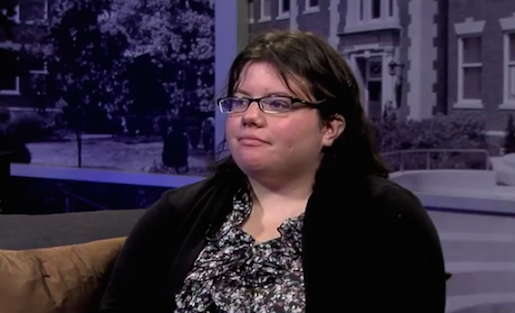Reported by Reuben Stern and Olga Kyle.
This week, we find out what Google Glass is really like as a reporting tool.
Over the past several months, a team of capstone students at the Missouri School of Journalism attempted to cover a variety of news and feature situations with the face-mounted device to determine whether it could be an effective tool for journalists. We hear about the possibilities and limitations they discovered — and see several examples of their video footage — in this conversation with Karen Rodriguez, a member of the Missouri team.
Reporting by Reuben Stern and Travis McMillen.
Pros and cons:
After several months of using Google Glass for reporting, the team identified several advantages and drawbacks of the technology:
Advantages:
- Glass provides a unique angle to tell a story, i.e. first-person perspective.
- The video quality wasn’t bad. The footage is recorded at 720-pixel resolution, which might not be perfect for TV news but is generally sufficient for online and via mobile devices.
- Glass has ample storage capability (i.e., 12 GB of usable memory). Throughout the testing the team did not run into a shortage of available memory.
- The most obvious advantage of Google Glass is that it is easy to use, carry and wear. The device weighs 50 grams, or less than 2 ounces. For comparison: A compact video camera such as the Canon Vixia weighs about 10 ounces with a battery, and a Nikon D7000 weighs about 11.5 ounces not included the lens.
Drawbacks:
- The battery lasted for more than two hours when the Glass was first acquired; but after four months of use, the battery only lasted for about half of an hour if the team constantly recorded with it. The Glass device also drains battery from the paired cell phone. If the cell phone is out of power, it means there is no Wi-Fi connection for the Glass to upload materials. So it’s important to bring mobile chargers along, although it still means having to pause the reporting until the power level is back up.
- Audio quality varied from situation to situation. When video was recorded in a small, noisy environment the audio was basically unusable. Audio on interviews also had some problems, so the team opted to use a separate device to gather audio. An iPhone is probably good enough for online video, but it means having to remember to start recording with the second device every time.
- Using Glass adds to the number of things a reporter would otherwise have to worry about. This includes avoiding head movement such as nodding; refraining from talking or making sound during an interview; making sure the reporter’s hair doesn’t fall in front of the camera lens, etc.
- Uploading video directly to the Web was somewhat unreliable. The device was set up to automatically save video to a Google+ account, and it often took from 10 minutes to a full hour for materials to show up online. In some cases, however, footage from the field was uploaded but then was nowhere to be found.
- A computer may not be able to read the contents of a Glass device connected to it, but Final Cut Pro does recognize the Glass as a camera. So, using the “import from camera” function enables video to be imported and saved.
–Compiled by Karen Rodriguez, Laishi Zhou and Haoyang Zhang, Missouri School of Journalism
Additional video footage:
Stories and footage recorded by the Missouri team are collected in a YouTube channel.
And, of course, there are plenty of examples online recorded by others that include first-person footage of roller coaster rides, skydiving, running through New York City, playing paintball, piloting a helicopter, jumping on a trampoline, playing table tennis, and racing a Go Kart.
Reuben Stern is the deputy director of the Futures Lab at the Reynolds Journalism Institute and host and co-producer of the weekly Futures Lab video update.
The Reynolds Journalism Institute’s Futures Lab video update features a roundup of fresh ideas, techniques and developments to help spark innovation and change in newsrooms across all media platforms. Visit the RJI website for the full archive of Futures Lab videos, or download the iPad app to watch the show wherever you go. You can also sign up to receive email notification of each new episode.


